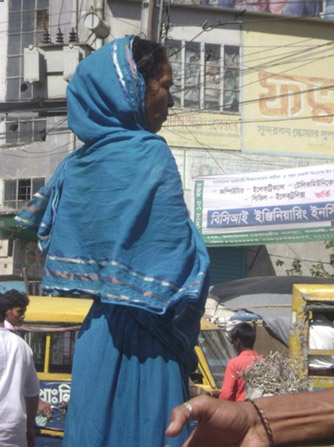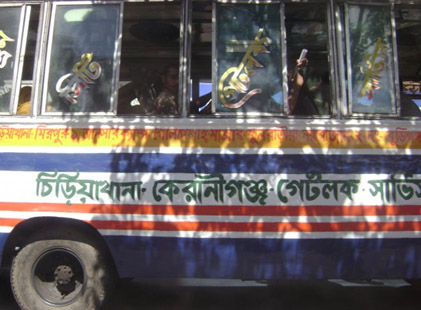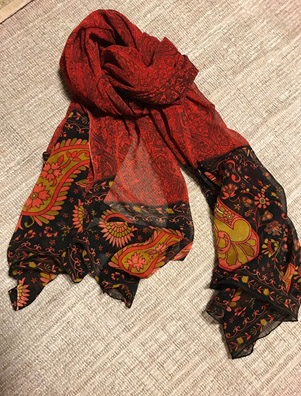The Girl in The Street (Version One)
People in this world have problems; problems of their own, problems of others, problems that have no names. Everyone has problems. If you have smaller problems, you may slide into happiness once in a while. If the problem is bigger, other smaller problems might add to that and life may become even more difficult.
We human beings are known for our ability to fight to stay alive, and sometimes it feels like we have too many problems. But living with problems does, at least, mean we are still living, and we still have to move forward. But how? Now that's the question we do not often ask.
Hello. I am just a girl in the street, who simply observes and judges people by their momentary appearance. My plan is to make a judgement about someone with zero background information, and no, I am not always supposed to get it right. It is my job to find out the worst truths about someone, to discover their greatest secret.
Now, here comes subject number one. For me to do my job, it is necessary to call any human being I observe a ‘subject’, but again we are unique human beings with our own unique inventions, so I guess that's nothing new.
To get back on track, my first subject, a girl, is probably about 22 or 23 years old, but somehow she manages to look older. She has a daughter with her, who looks to be about five years old, and surely she cares for her, because that's what mothers do for their little ones. But to me, she looks disappointed and mostly tired.

I need more back-up information to support my view, so I look for other signs, but I find nothing but her eyes... her dark circled eyes… which seem to be looking for someone to help her to carry her problems. But here she is, holding her troubles by herself, with her little daughter in her fragile hands.
We are sitting in the first seat of a bus, and before us there is only a window of broken glass. Outside, the sunlight is not strong, making the day seem gloomy and sad. The bus is travelling at a terrible speed. My subject and I have to hold onto our seats tightly, so that we don't bump our souls into that broken glass. I manage to do so using all my power; yet, because she is with her child, she has to do even more! She has tied a knot in her orna* around herself and her little girl, to keep her safe.

She seems so afraid. Perhaps this is because of the fact that no one here is helping her to stay safe at this moment. She clearly cannot not afford to make any more effort to protect her burden. Neither will her ‘knot’* help her! This should not sound so surprising, because that’s life. Life just happens, and it happens to everyone. If not, then our precious society will also place us under the weight of other heavy problems, right? So, surely, this is why this girl does what she has to do, and does not give up, even if she wants to!
My observation of my subject has so far led me along a fine path. It shows me that my subject has sad, worthless feelings about herself. But then again, we all suffer from that in some way. Right?
So will this girl ever know, while holding onto the window handle with her right hand, and with the other one balancing her daughter and her bag, that she was studied by an unknown observer! Or, if she did notice that she was being watched, would she take that as an insult and feel a sense of discomfort that I, her observer, might have caused her?
But the big question is really one that we should all ask ourselves… Will we ever be able to ask ourselves honestly about the problems that we try to hide if we hold onto our ‘seats’? And why is it that we hold so tightly to our ‘protective cushions’, those things that make us feel safe in life, so that our problems do not walk around on the streets, in the daylight, for all to see!

*orna = long scarf
____________________________________________________________________________________
Learning Activities
Vocabulary Lists: learn all of the words from the following two lists…
1. High Frequency Words from the 2nd 1000 General Service Word List
| afford | corner | handle |
| alive | cushion | hello |
| babies | disappointed | hide |
| balancing | discomfort | honestly |
| bus | guess | information |
| insult | probably | track |
| inventions | slide | weight |
| knot | terrible | worst |
| managed | tightly | zero |
| precious | tired |
2. High Frequency Words from the Academic Word List
job unique
3. Do you know the meaning of the words and expressions below? The bold words are not high frequency, or common, words in English, so only learn these words and expressions if you already know ALL of the words in the two lists above, very well.
Once you understand the meaning of the words and expressions below, discuss the questions with a partner.
- Fragile: “… in her fragile hands.” (Why do you think the writer describes the girl’s hands as ‘fragile'?)
- Gloomy: “…making the day seem gloomy.” (Why do you think the writer chose to describe the day as ‘gloomy’? How does this word add to the sad feeling the writer has created in this story? What other words has the writer used to create this feeling?)
- Bump: “…bump our souls…” (Does the writer really mean 'souls', or something else?)
- Burden: “… to protect her burden.” (Who, or what is the 'burden' in the story?)
- *Knot: “…neither will her ‘knot’ help her…” (Who, or what is often called a ‘knot’ in Bangladeshi culture? Why do you think the writer uses this word?) Do you know the English expression 'to tie the knott'? What does it mean?
4. Using Synonyms: Replace the bold words in the expressions in number 3 above with an easier word that you already know. Try to keep the meaning of the expression the same, as much as possible.
5. Critical Thinking Questions
a. Analyse: In a group, or with a partner, discuss the questions in the last paragraph. In your view, what are some of the ‘protective cushions’ that people use to hide from their problems?
b. Apply: Discuss these questions in English.
- Have you ever watched people when you have been in a public place?
- Have you ever created imaginary stories about the people you see, and their lives?
Take some time to sit in a public space and observe people. Think about who the people are, where they might be going, and what their lives are like. After watching, make some notes in English about your thoughts as you observed. Use your notes to help you remember what you saw and thought, and report back to your classmates. Do not read directly from your notes. What did you learn from watching other people? Remember to speak in English.
c. Evaluate: The storyteller calls herself “the girl in the street”. In your opinion, what kind of person is she? What is your opinion of her comments, when she says that she “judges people by their momentary appearance… with zero background information...” and …“It is my job to find out the worst truths about someone, to discover their greatest secret.” Give some reasons for your answers.
d. Create: According to the story, the young woman on the bus does not seem happy. With a partner, write another part of the story that explains more about the young woman on the bus and her daughter. Try to describe why she may be unhappy. Explain EITHER
a) what happened to the young woman and her daughter before the story begins…
OR
b) write what happens after the story finishes.
e. Create: Go outside to a public place and spend about 10 minutes observing the people around you. Choose one of those people and try to remember everything you can about that person’s appearance and actions. What are they doing? Where are they going? How do you think they are feeling? Later, draw a picture of that person, and write a short paragraph in English describing the person.
In another paragraph, write an imaginative story about what was happening in that person’s life on the day you saw them. (Think about what they looked like, where they might have been going, and what they were thinking about.)
Share your picture and your writing with another person and discuss your work together in English. Ask your partner a lot of questions!